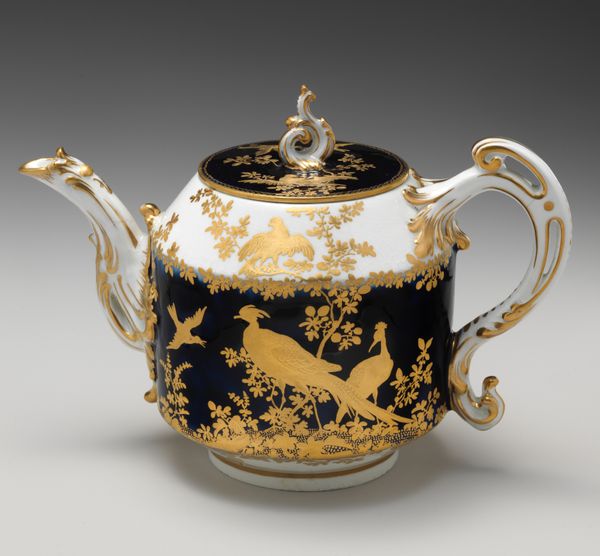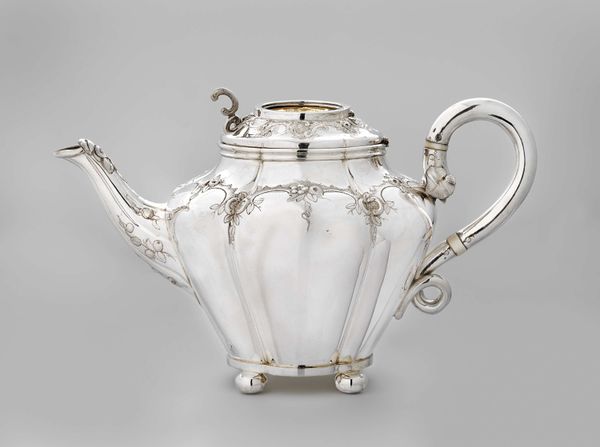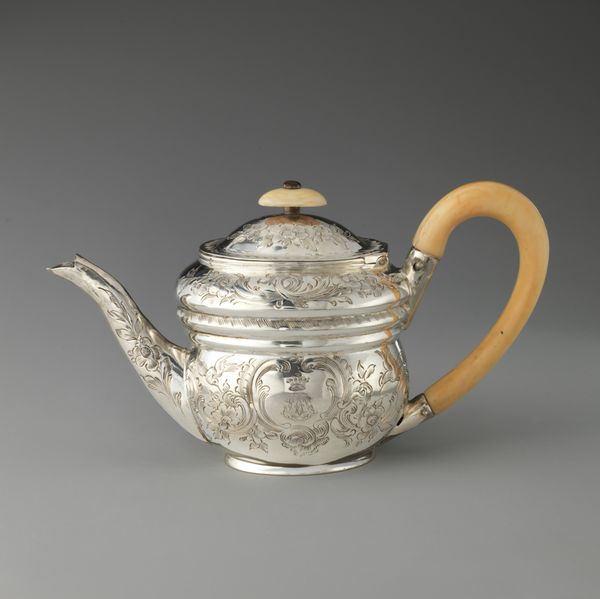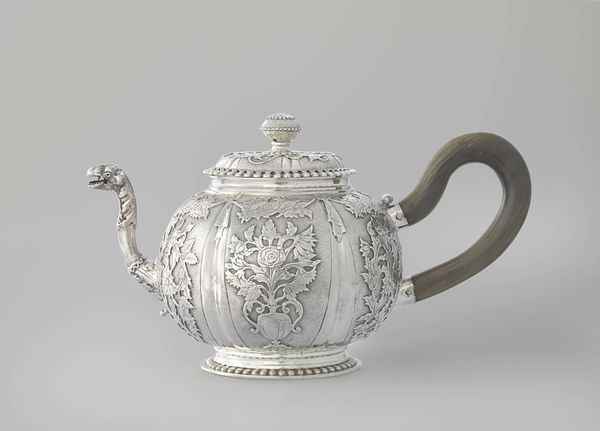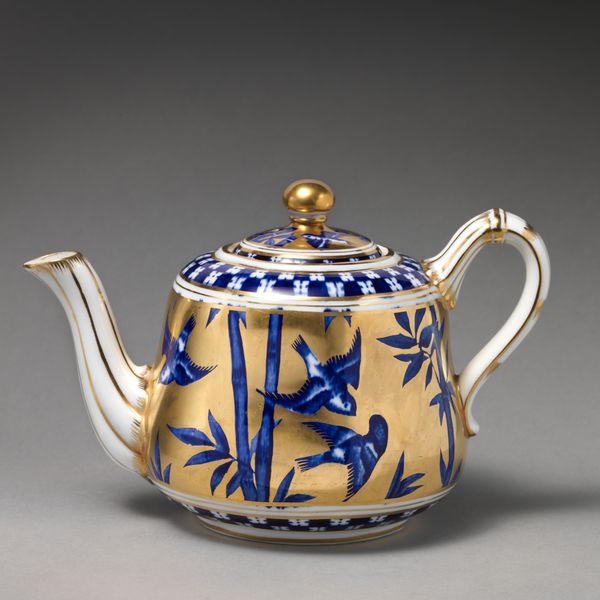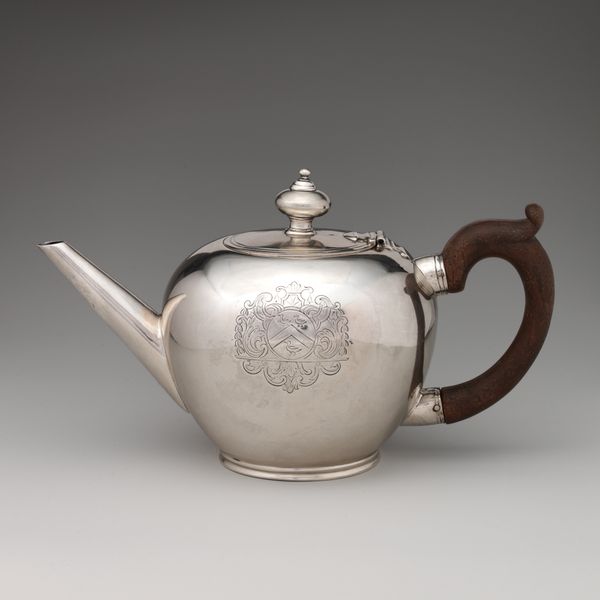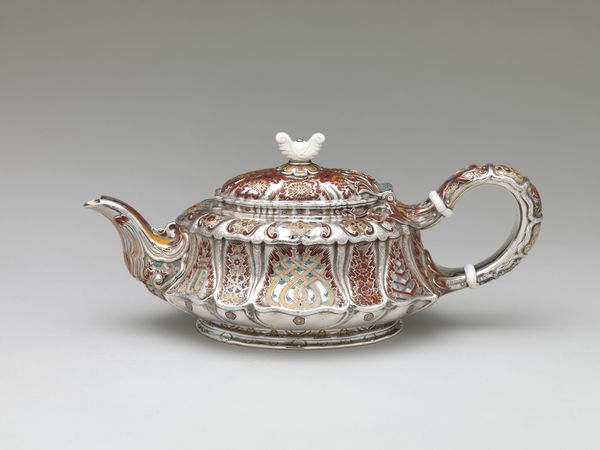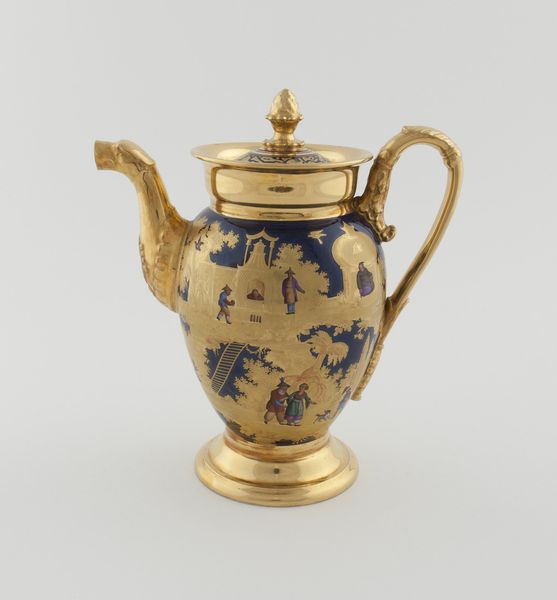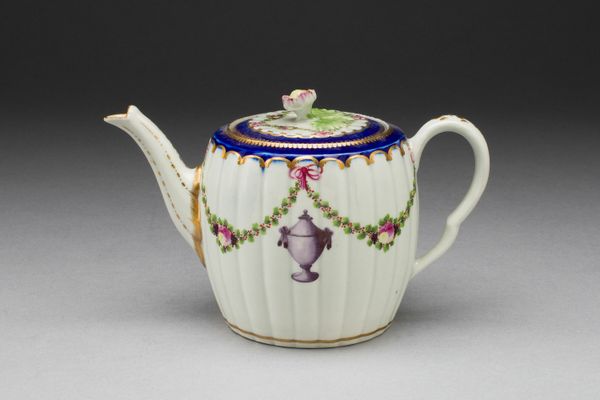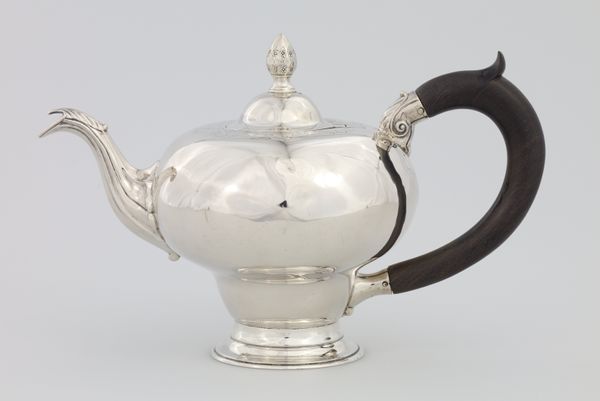
ceramic, porcelain
#
ceramic
#
porcelain
Dimensions: 15.4 × 18.7 cm (6 1/16 × 7 3/8 in.)
Copyright: Public Domain
Curator: This is a teapot, crafted around 1845 by the Manufacture nationale de Sèvres. The piece is rendered in porcelain and currently resides here at The Art Institute of Chicago. Editor: The stark whiteness against the metallic gold is arresting; it gives off an almost austere regality, like something reserved for only the most formal of occasions. Curator: The use of Sèvres porcelain tells us a great deal about the item's intended audience. During this period, the manufacture's wares were almost exclusively commissioned for the aristocracy, suggesting specific values placed on refinement. Editor: It's more than just the elite enjoying it though, isn’t it? The level of artisanal craft needed speaks to labor hierarchies; access to those specialized skills was certainly limited by social standing. Look at the fine gilding and meticulous molding of the handle and spout, for example. It’s someone's skilled job made precious. Curator: Precisely. The decorative elements, that monogram topped by a crown encircled within a laurel wreath, they act as symbols of power. Consider how tea ceremonies often were steeped in social dynamics; using something like this asserts one’s position in social hierarchies. Editor: And in material terms, the distance those raw materials travel also hints at broader economic contexts, don't you think? The kaolin, necessary for fine porcelain, may have come from specific regions, revealing a complicated trade network driven by colonial resource extraction at the time. Curator: Absolutely. Understanding the networks through which it was obtained allows us a deeper exploration of the complex global political dynamics enmeshed within everyday luxury. It provides insights into privilege, identity, and even national aspirations during that time. Editor: I now consider how access and resources shape what survives—museum objects that have gained a voice of their own across these spaces! Curator: Thinking about it this way allows a reflection not just on aesthetics, but also how history and power have been so delicately formed, handled, and preserved within its ceramic shell.
Comments
No comments
Be the first to comment and join the conversation on the ultimate creative platform.

